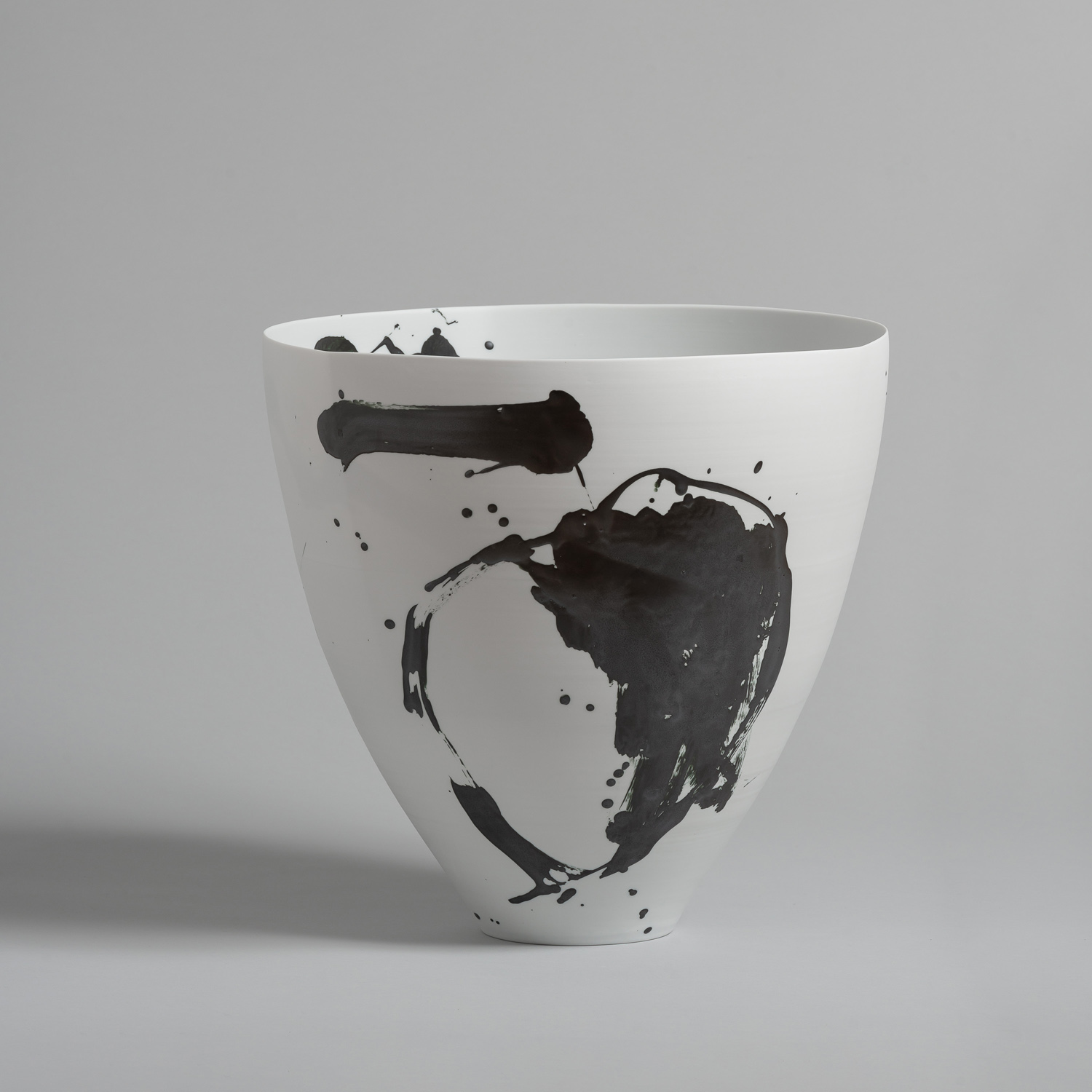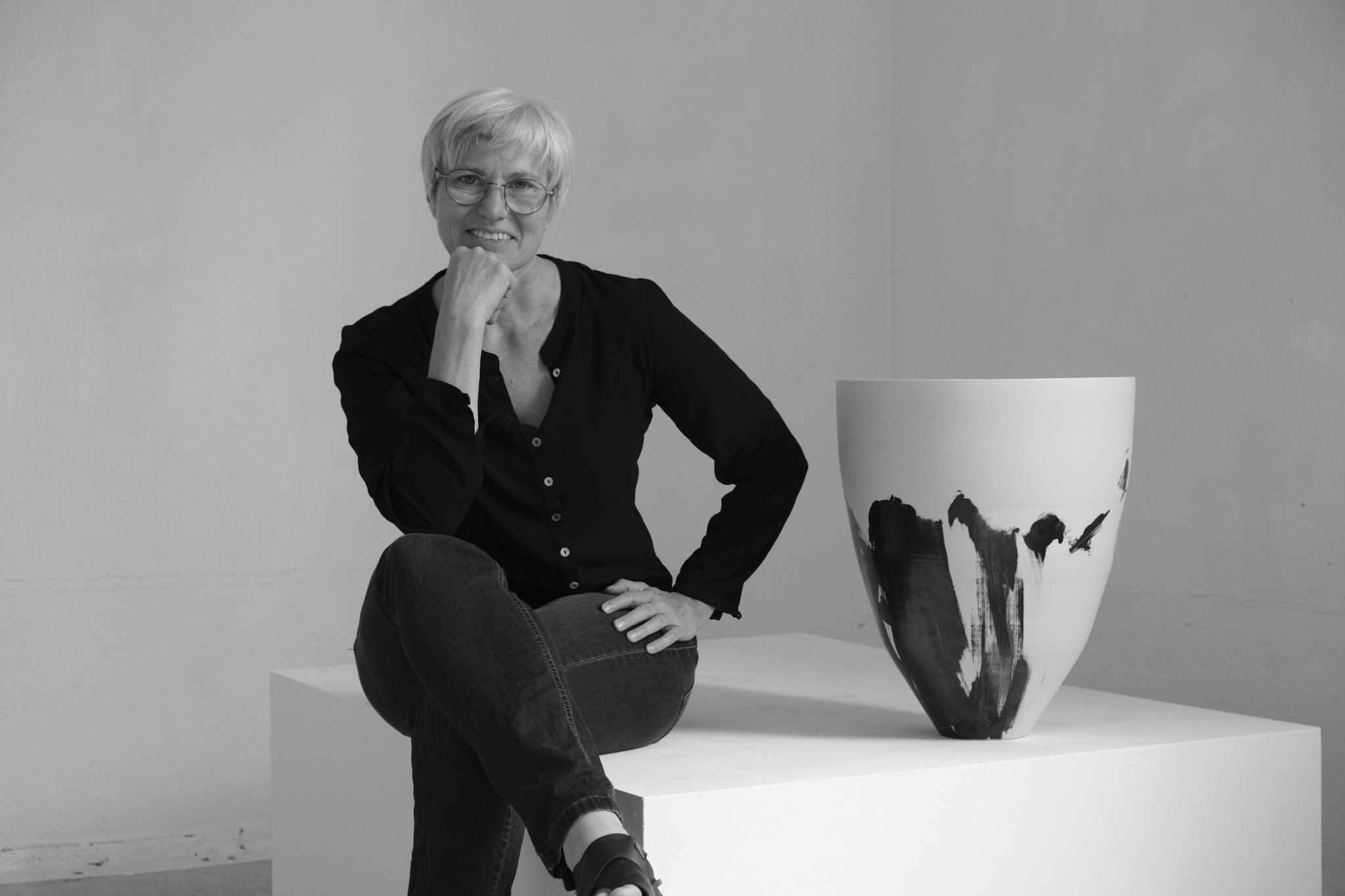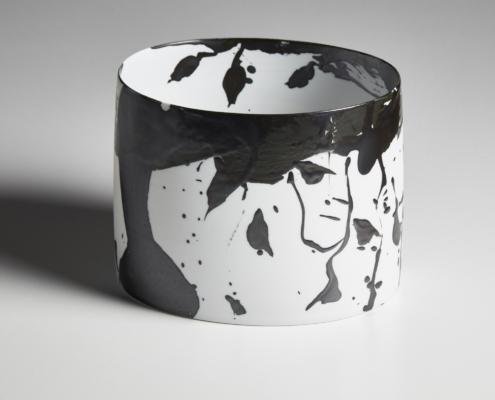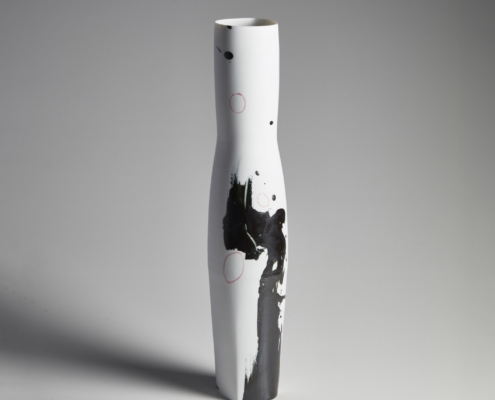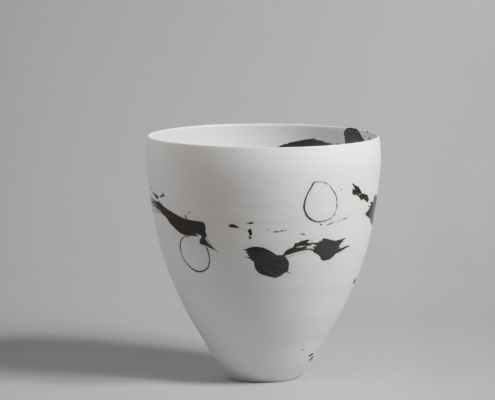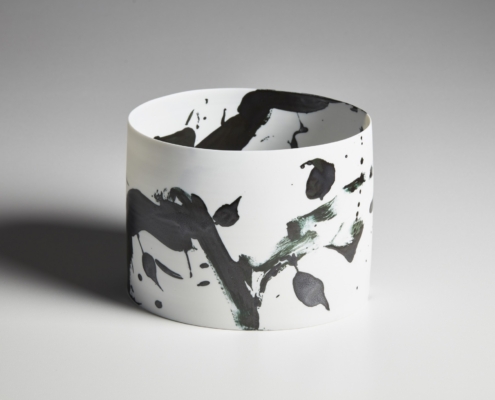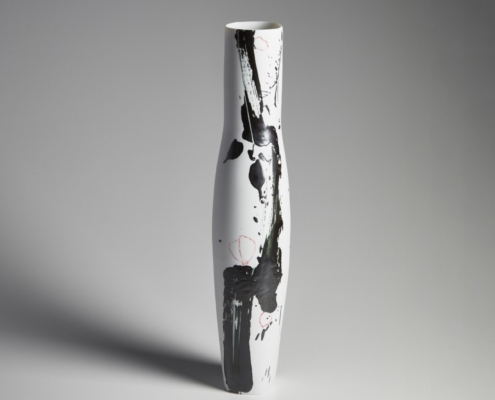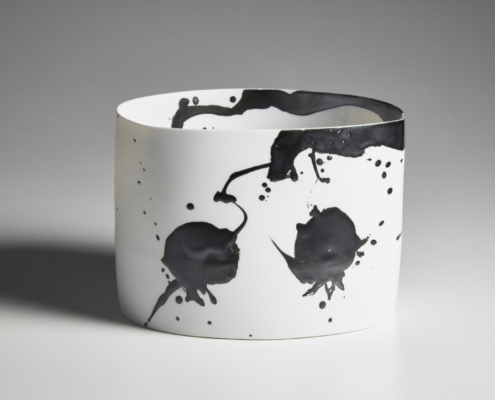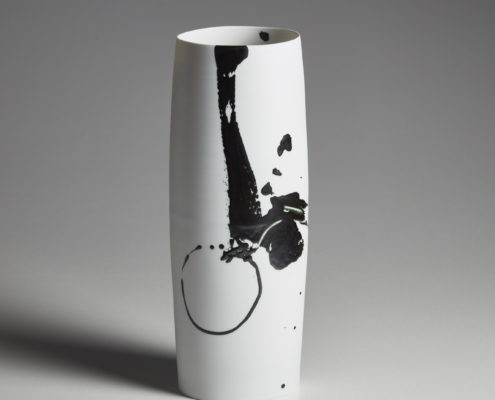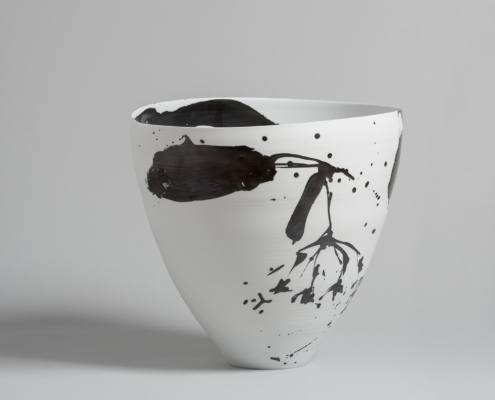Karin Bablok
The revelations of silence
30 June – 6 September 2018
Opening Saturday 30 June 2018 from 6 pm, in presence of the artist.
For its very first Karin Bablok show, the Galerie de l’Ancienne Poste focuses on tall, narrow forms and wide cylinders made of white porcelain, on which Karin Bablok designs a black painting decoration spontaneously applied with a brush, a practice that has become a distinctive feature of her personal expression throughout the years. The artist’s main concern is to seek harmonies between the black interventions that play on the inside and on the outside of the ceramics.
Born in Donauwörth (Bavaria) in 1964, Karin Bablok has become one of the most important German ceramists of her generation. Upon graduating from high school, she readily committed to working with clay and consolidated her skill from 1988 to 1991 by completing a traditional apprenticeship tour as a journeywoman across Germany, Ireland and the United States. When she returned, she went on to study at the school of ceramics in Höhr-Grenzhausen (Rhineland-Palatinate) before joining the University of Koblenz from 1992 to 1995, within an art-training program. However, her work was noticed as early as 1993 and she obtained a first prize later followed by many others in Germany, Japan and Korea. Her works are featured in numerous museums and private collections.
Jet black, bluish black, olive black, pitch black… strokes halted in their flight, perhaps incomplete, yet vigorous… white background: mute, withdrawn presence, yet essential to the stark contrast. Recollections arise, irresistible associations, knowing comparisons dear to a Western culture looking to the East. Yet, let us say it quite clearly: it would be a mistake to see the glaze paintings decorations applied on Karin Bablok’s porcelain as related to the art of calligraphy.
To understand this, one needs to admit the existence of many kinds of balances: the one displayed by calligraphy masters can appear aesthetically like a closed completion as it claims to be a sort of visual and philosophical perfection. With Karin Bablok, nothing of the sort. The harmony is ever moving. It is one of the many contrasts, even paradoxes that characterize the artist. The artwork’s stability is never static, never really complete, but extended through our gaze.
Valérie Bougault
Journalist and art critic,
Extract from the exhibit catalogue.

